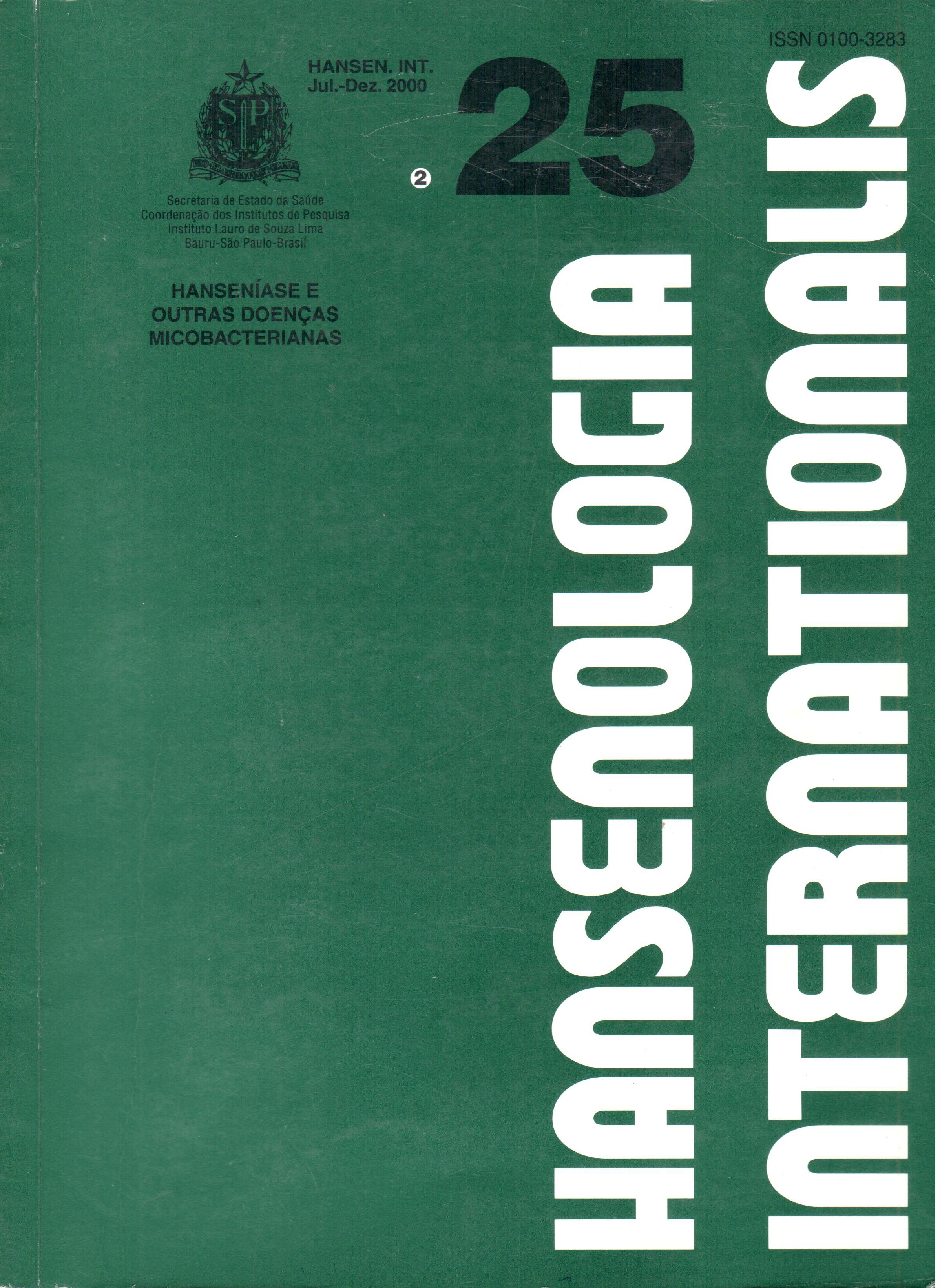One more case of Sulfone Syndrome
DOI:
https://doi.org/10.47878/hi.2000.v25.36439Keywords:
Sulfone Syndrome, Atipical lymphocytes, Leprosy, ErithrodermaAbstract
A case of a patient was reported presenting fever, pruritus, malaise, and erythroderma surrounding hypocromic macules in the anterior aspect of the trunc after the beggining of the leprosy treatment. Biopsies of lesions showed regular epitelial dermatitis and pleiomorphic lymphocitic infiltrate with intense epidermotropism and follicular involvement. Bacilli in nerves and macrophages were detected in all the biopsies. Laboratory
examens demonstrated anaemia (erytrocytes- 3,300,000/mm3; Hb - 9,2%) and leucocitosis (20,800 leucocytes/mm3) with 40% of lymphocytes and polymorphism of these cells. These manifestations were labelled as "Sulfone Syndrom" despite the lack of other components. The authors considered atypical lymphocitosis to be the hall mark of this Syndrom and called the attention to the lymphocitic pleiomorphism in intense epidermotropism and follicular involvement observed in the histopathological examinations done. This picture disappeared in the posterior biopsies. They discussed why erythroderm did not involve hypochromic macules of leprosy and considered that an autosensitization phenomena would result in the persistency of the erythroderma even after sulfone was withdrawn.
Downloads
References
2. FREY, H.M. et al. Fatal reaction to dapsone treatment of leprosy. Ann. Inter. Med., v.94, p.777-79, 1981.
3. LOWE, J. Diaminodiphenilsulphone in the treatment leprosy. Lancet, n.6645, p.18-21, 1951.
4. RAMANAN, C.; CHORPADE, A.; MANGLANI, P.R. Dapsone syndrome. Indian J. Leprosy, v.63, n.2, p.226-228, 1991.
5. KHARE, .A.K.; BANSAL, N.K., MEENA, HS. Dapsone syndrome: a case report. Indian J. Leprosy, v.59, n.1, p.106-109, 1987.
6. JOSEPH, M.S.Hypersentitivity reaction to dapsone. Four case report. Leprosy Rev., v.56, p.315-320, 1985.
8. ROBINSON, H.M., STONE, J .H. Exanthem due to diphenylhydantoin therapy. Arch. Derm., v.101, p.462-465, April, 1970.
9. MILIKAN, L.E.; HARRELL, E.R. Drug reactions to the sulfones. Arch. Derm., v.102, p.220-224Aug., 1970.
10. KROMANN, N.P. The dapsone syndrome. Arch. Derm., v.118, p.531-532, July, 1982.
11. LEIKER, D.L. The mononucleosis syndrome in leprosy patients treated with sulfones. Int. J. Leprosy, v.24, n.4, p.402-405, 1956.
12. LOWE, J.; SMITH, M. The chemotherapy of leprosy in Nigeria: with an appendix on glandular fever and exfoliative dermatitis precipitated by sulfones. Int. J. Leprosy, v.17, n.3, p.181-195, 1949.
13. OPROMOLLA, D.V.A.: FLEURY, R.N. Síndrome da sulfona e reação reversa. Hansen. Mt., v.19, n.2, p.70-76, dez.,
Downloads
Published
How to Cite
Issue
Section
License

This work is licensed under a Creative Commons Attribution 4.0 International License.
This journal is licensed under a Creative Commons Attribution 4.0 International License.


























